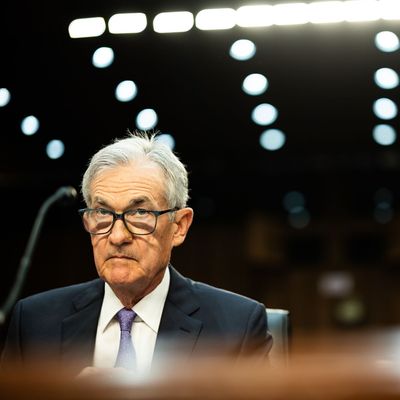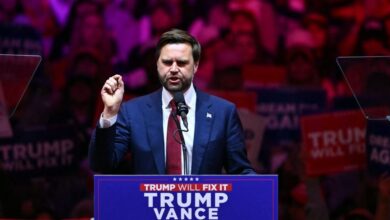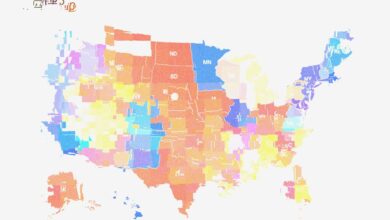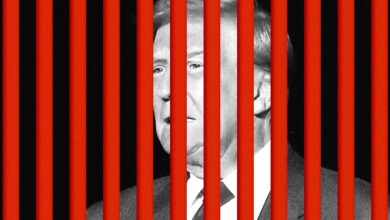

Photo: Tierney L. Cross/Bloomberg/Getty Images
On Wednesday morning, something strange was happening on Wall Street. It was hours before the Federal Reserve announced it would cut interest rates, but nobody had any idea how deep central bank would go. Would Jerome Powell, the Fed chair, opt for a more measured change in rates, just as he had for the last year? Or would he go big with a double-sized cut, signaling that the economy was crumbling faster than expected? “My guess is 50-50,” one hedge fund manager told me – that is, a half percentage point cut at this meeting, and another half point cut at the next one, in October. “More than I would have thought a month or so ago.”
By the afternoon, the Fed announced it was cutting rates by a half a percentage point — a jumbo-sized adjustment to borrowing costs that immediately caused the stock market to go vertical. But while the aggressive move caused a buying frenzy on Wall Street, it signaled that the problems with the economy may be deeper, and require more drastic action.
But all the suspense around the size of the cut – a kind of soap opera that has kept the financial world mesmerized for weeks – from Fed officials was strangely uncharacteristic. The September meeting was supposed to be a triumphant moment for Powell — one where he could unofficially claim victory over the inflation problem that took root over the past two years and take credit for guiding the economy to a so-called soft landing, where it slowed down a bit but didn’t slip into recession. Instead, it has highlighted that the problems facing the economy are harder to get right than previously thought, and the divisions at the most important monetary institution in the world may be deeper than they’ve been in decades.
It’s no exaggeration that trillions of dollars were at stake over the size of the cut. The bond market, the stock market, values of homes, the unemployment rate, the very strength of the U.S. dollar — all these would rise or fall depending on the central bank’s decision. Since traders were leaning toward a bigger cut, they likely would have sent markets sinking if the Fed had only gone with a quarter-point reduction.
But while a bigger cut was Wall Street’s preferred outcome, it also would give investors pause, signaling that the economy, in the eyes of the Fed, was in worse shape than previously known. The opposite held true for a shallower cut — one on hand, it wasn’t what Wall Street wanted, but it would have been a reassuring sign that the economy was essentially fine, and anything more would risk sending prices back higher. But a lager cut came with harder risks. If Powell turned out to get it wrong, and inflation came back, it would be an embarrassing — and more difficult — coda to an already delicate situation.
The Fed, despite its reputation as a gnomic Delphi a few blocks from the White House, actually has a policy of trying to be somewhat transparent about how it will change interest rates, if at all. Powell himself has appeared frustrated at times that traders have ignored his speeches, and he’s sometimes resorted to putting on an especially unhappy glower when he has sought to get a pessimistic message across. When Powell wants to Wall Street to get a clue about what the Fed is planning, there tend to be more speeches from central bank officials where they give their thoughts about the economy; other times, it’s via the Wall Street Journal’s dedicated reporter. For the last 21 years, this has been a more-or-less standard practice, and there have only been a few times since the Alan Greenspan era that they’ve deviated. The silence from the Fed this time around suggested whatever it was that Powell wanted to do, he hadn’t yet convinced a clear majority of the Federal Open Market Committee, the 12-member board that sets interest rates, to go along with him.
In the weeks leading up to Wednesday’s meeting, there seemed to be some early signs of discord. A few of the most powerful Fed officials under Powell — including Fed governors Christopher Waller and Michelle Bowman, and John C. Williams, the President of the New York Fed — had sounded skeptical or ambivalent about the kind of a double- or triple-sized cut that Wall Street wanted, versus the 25 basis point minimum increment (that is, a quarter percentage point). “He works from consensus, he doesn’t like dissent,” Robert L. Hetzel, the author of The Federal Reserve: A New History, and a former Vice President at the Federal Reserve Bank of Richmond, said of Powell. “That tells you something about Waller and [Williams]. He really needs to bring them along, because they’re serious economists. If he had been able to bring them along, then I think the others would have fallen in line pretty readily.”
In fact, Bowman dissented, making her the first Fed Governor to do so since 2005. (She wanted a quarter-point cut). It appears Powell was able to wrangle the rest of the committee to not only go along with a bigger cut, but to see the case for far lower rates by December and deep into 2025. Looking at the Fed data, it appears that the economy is finally, actually, getting back to normal. The Fed sees inflation as only going lower for the next two years, and the unemployment rate staying just a bit higher than where it is now, at 4.2 percent. Powell has been able to get enough of the Fed to go along with him this far. Unless the economy cracks up, he’ll probably be able to get them to keep going.
Source link




